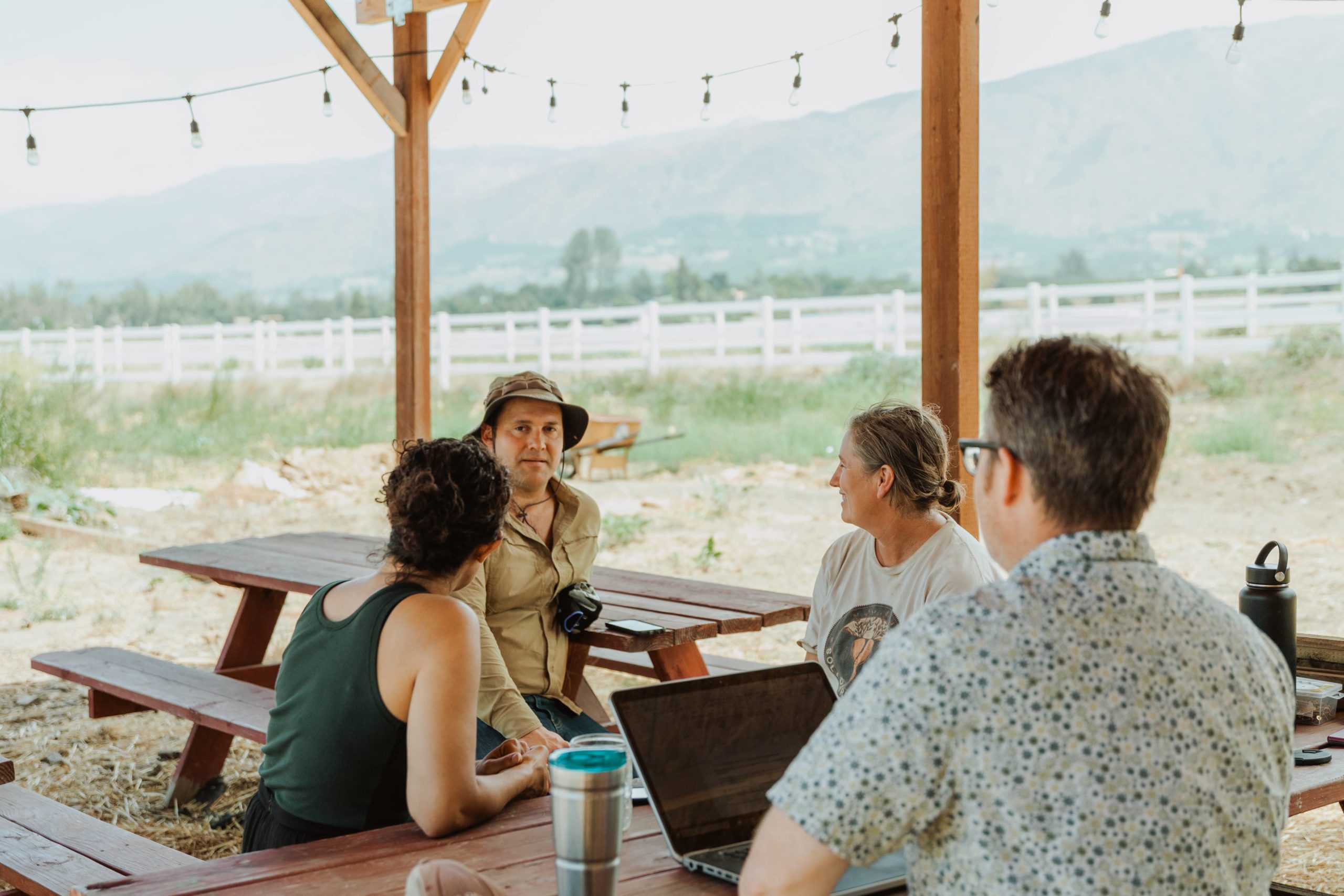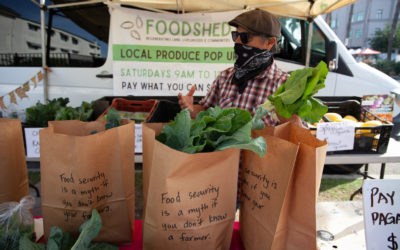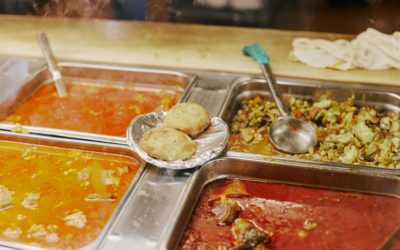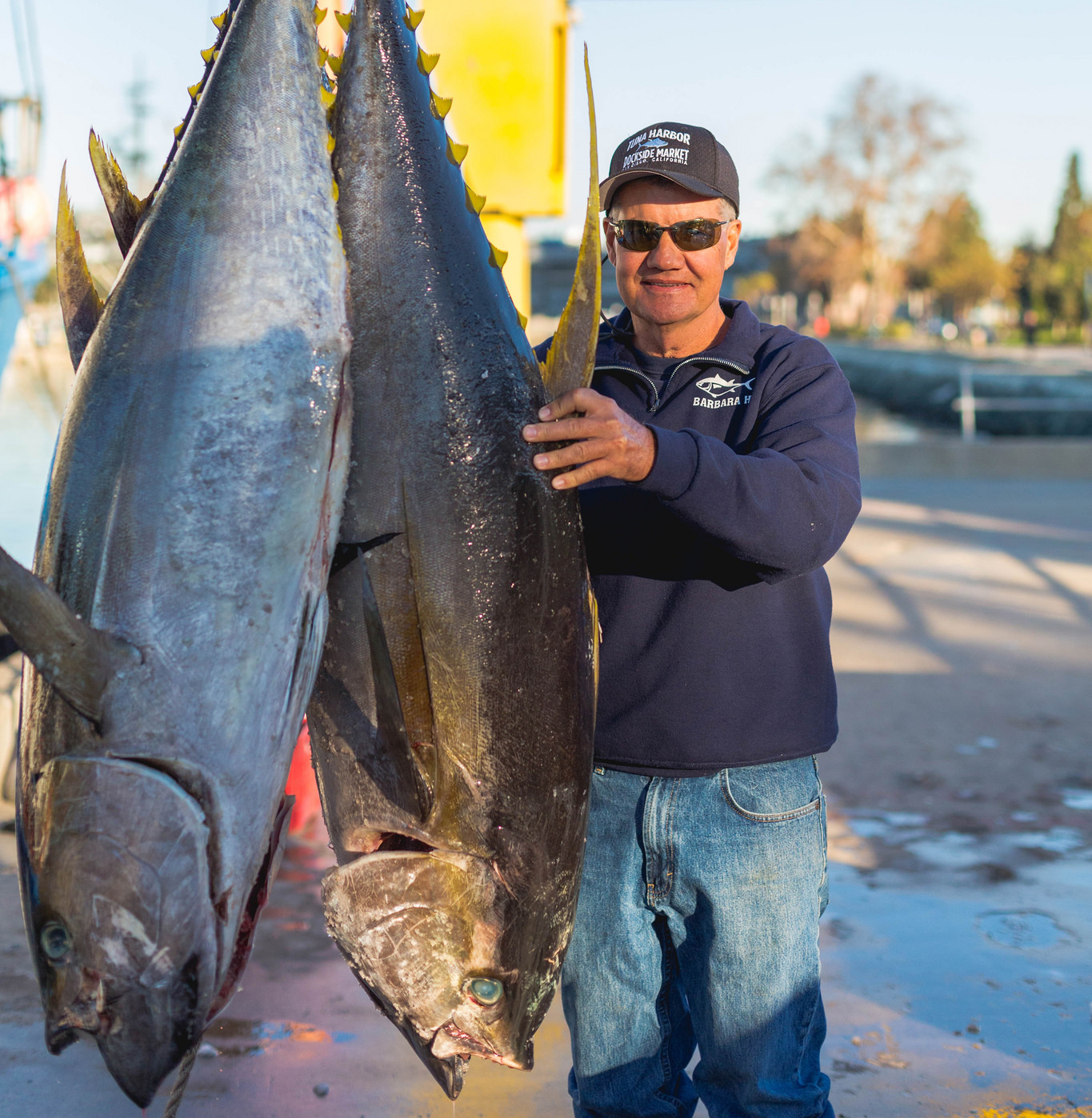Becoming a subscriber to Foodshed’s Fresh 5 program—a weekly distribution of fresh, seasonal produce, grown by the small farmers who make up the Foodshed cooperative—means you’re in for two surprises with every delivery. One is the produce itself: an ever-changing...
Objective 2
Increase the Viability of Local Farms, Fisheries, Food Businesses, and Workers
Introduction
Small and midsize farmers, fishermen, and food business owners—including food processors, food manufacturers, restaurants, and retailers—struggle to make a living and maintain viable businesses in a food system that does not uplift them.
At the root of many viability challenges is market concentration. Multinational corporations dominate the food supply in every region of the United States, including San Diego County. They hold enormous power, resources, and scales of production to drive prices down and squeeze competition out at every phase of the food chain. With their outsize resources, corporations also have immense power to influence consumer preferences. In spite of the growing popularity of slogans like “vote with your fork,” consumer demand for convenience and affordability continues to rise, prompted by corporate retailers’ promises to deliver more, faster, and cheaper. This exacerbates viability challenges for small and midsize businesses, leading to closures and accelerating market concentration trends.
Building a more resilient food supply and economy means we need to ensure that through small business ownership, diverse entrepreneurs are able to increase their income potential, achieve long-term financial stability, provide for their families, and continue enriching their communities. We need to create an integrated support system and invest in those in our community for whom traditional business development services are out of reach, with a focus on BIPOC, immigrants, women, and individuals with low income.
We also must recognize that currently, our systems define business viability narrowly, elevating financial profit above all while ignoring the many other ways businesses should be viable—and that many small and midsize businesses often already are: able to reflect the values of the community they serve, reinvest in their local economies, generate social capital, perform environmental services, regenerate the resources they depend on, and provide fair working conditions for their employees. Only by reimagining how we define and evaluate business viability can we create a food economy that works for all.
Chapter Summary
Food system businesses are critical for our communities and economy.
More than 217,000 people in San Diego County are employed at over 20,000 food system businesses.
Most farms are small and have low sales, despite increasing demand for local food.
70% of San Diego County farmers surveyed in the 2017 Census of Agriculture indicated that they had incurred net losses on their farm, averaging $29,000.
Fisheries experienced a historic decline, but are slowly revitalizing.
San Diego County’s commercial fishing industry went from generating annual sales of $240 million in 1981 to annual sales of $11.4 million in 2019, a 95% decrease.
Food and beverage processing and manufacturing is limited.
Food and beverage processing and manufacturing makes up only 12.6% of the total number of manufacturing establishments in San Diego County. Scaling up small food businesses often requires leaving the region.
San Diego County has a large and diverse restaurant industry, but many businesses struggle with profitability.
Average profit margins for restaurants fall between 3-5%, and the industry was hit hardest by COVID-19-related employment losses.
Small neighborhood markets and retailers are facing growing challenges competing with large chains.
The top four chains alone—Walmart, Kroger, Albertsons, and Ahold Delhaize—accounted for nearly 45% of grocery sales in 2016 (last year of data available).
There are many ways to make our small and midsize businesses more viable.
including increasing local food sales, providing more support services, and adopting community wealth building models, but they require significant investment and expanded support.






